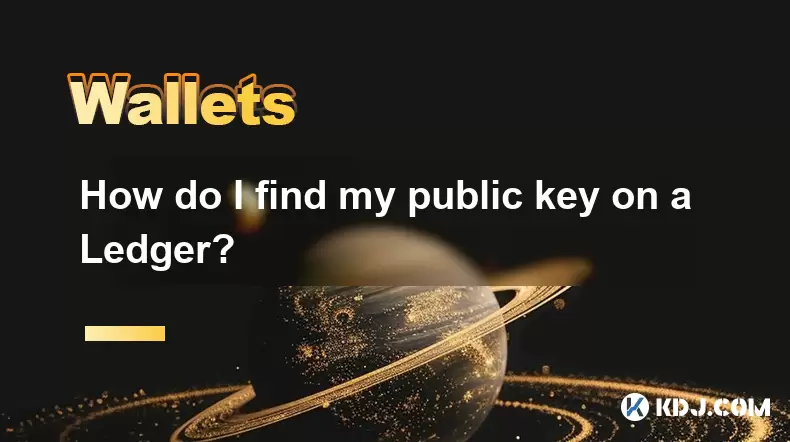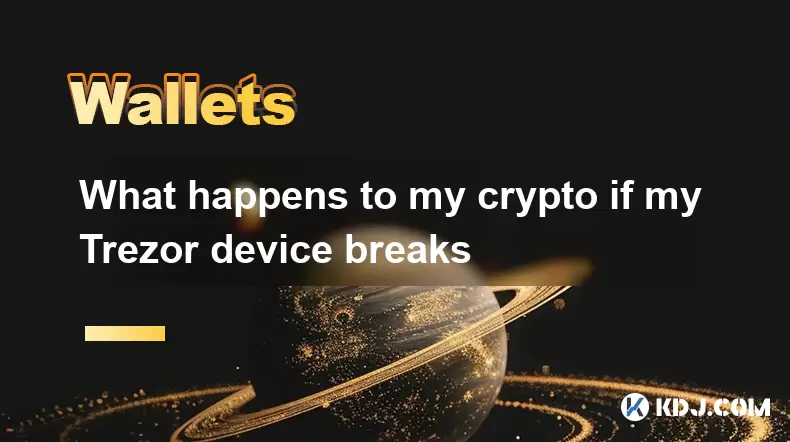-
 Bitcoin
Bitcoin $117,879.8627
0.05% -
 Ethereum
Ethereum $2,956.4450
-0.23% -
 XRP
XRP $2.7737
-0.58% -
 Tether USDt
Tether USDt $1.0003
-0.01% -
 BNB
BNB $687.3817
-0.92% -
 Solana
Solana $161.9370
-0.65% -
 USDC
USDC $1.0000
0.00% -
 Dogecoin
Dogecoin $0.1983
-2.35% -
 TRON
TRON $0.3019
-1.02% -
 Cardano
Cardano $0.7217
-0.53% -
 Hyperliquid
Hyperliquid $47.5630
3.05% -
 Stellar
Stellar $0.4341
11.02% -
 Sui
Sui $3.4115
-0.11% -
 Chainlink
Chainlink $15.1548
-0.82% -
 Bitcoin Cash
Bitcoin Cash $505.9817
-4.61% -
 Avalanche
Avalanche $21.0131
1.73% -
 Hedera
Hedera $0.2033
2.29% -
 UNUS SED LEO
UNUS SED LEO $9.0775
-0.06% -
 Shiba Inu
Shiba Inu $0.0...01315
-1.08% -
 Toncoin
Toncoin $3.0032
0.48% -
 Litecoin
Litecoin $93.1712
-1.23% -
 Polkadot
Polkadot $3.9194
-0.78% -
 Monero
Monero $334.1138
0.50% -
 Dai
Dai $1.0000
-0.01% -
 Ethena USDe
Ethena USDe $1.0005
-0.04% -
 Uniswap
Uniswap $8.4642
-3.24% -
 Pepe
Pepe $0.0...01231
-0.36% -
 Bitget Token
Bitget Token $4.3823
-1.34% -
 Aave
Aave $302.1026
0.83% -
 Bittensor
Bittensor $386.2829
-2.26%
How do I find my public key on a Ledger?
In cryptocurrency, a public key allows others to send funds to your wallet and can be shared safely, unlike the private key.
Jul 12, 2025 at 06:42 pm

Understanding the Role of a Public Key in Cryptocurrency
In cryptocurrency, a public key serves as an address that allows others to send digital assets to your wallet. It is derived from your private key through cryptographic algorithms and is unique to each wallet. While the private key must remain confidential, the public key can be shared freely. For users of hardware wallets like Ledger, knowing how to locate and verify your public key is essential for confirming transactions and ensuring security.
The public key plays a crucial role in blockchain transactions, acting as the receiving end of funds and verifying ownership without exposing sensitive data.
Navigating Ledger Live to Locate Your Public Key
To access your public key using Ledger Live, you’ll need to connect your device via USB and open the application. After unlocking your Ledger with the PIN code, follow these steps:
- Open Ledger Live and ensure your device is recognized
- Select the cryptocurrency for which you want to find the public key
- Click on "Receive" within the account dashboard
- The public key (or wallet address) will appear on both the screen and the Ledger device
Always verify that the address displayed on your computer matches the one shown on your Ledger's screen to prevent phishing or man-in-the-middle attacks.
Using the Ledger Device Directly to View Public Keys
For added security, you can also view your public key directly on the Ledger hardware wallet without relying on third-party software. This method ensures that no external device manipulates the displayed information.
- Connect your Ledger to your computer and power it on
- Navigate to the specific cryptocurrency app installed on your device
- Open the app and select the option labeled “Receive” or similar
- Your public key will be displayed on the screen of your Ledger
This approach minimizes the risk of malware altering the address shown on your computer, providing an extra layer of trust and verification.
Locating Extended Public Keys (xpub) for Advanced Users
For developers or advanced users managing multiple addresses or watching wallets, retrieving the extended public key (xpub) is often necessary. The xpub allows generating multiple public keys without needing the private key, making it useful for multisignature setups or cold storage monitoring.
- Open the relevant cryptocurrency app on your Ledger
- Access the settings or advanced options within the app
- Look for an option to export or display the extended public key
- Confirm the action on your Ledger device
The xpub is not sensitive like a private key but should still be handled carefully, as it reveals all associated addresses and transaction history.
Verifying Public Keys Across Different Platforms
Sometimes, users may wish to confirm their public key across various platforms, such as block explorers or third-party wallets. This process involves copying the public key from your Ledger and pasting it into a blockchain explorer related to the specific cryptocurrency.
- Copy the public key from your Ledger Live or device screen
- Visit the official block explorer for the corresponding blockchain (e.g., blockchair.com for Ethereum or blockstream.info for Bitcoin)
- Paste the public key into the search bar and hit enter
- Review the transaction history and balance associated with the address
Cross-checking your public key on a blockchain explorer confirms its validity and visibility on the network, ensuring seamless fund reception and transparency.
Frequently Asked Questions
Can I share my public key safely?
Yes, sharing your public key is safe and necessary for receiving cryptocurrency. However, never share your private key or recovery phrase.
Why does my public key change every time I receive funds?
Many wallets, including Ledger, use hierarchical deterministic (HD) structures. Each time you request a new receive address, it generates a new public key for privacy and tracking purposes.
Is there a way to export my public key in bulk?
Advanced tools and libraries like BIP32utils or Electrum allow exporting multiple public keys if you have the extended public key (xpub). Always use trusted software for this purpose.
What should I do if the public key doesn’t match between Ledger and Ledger Live?
If the public key differs between your Ledger device and Ledger Live, disconnect and reconnect your device, restart the application, or reinstall the app. If the issue persists, contact Ledger support for assistance.
Disclaimer:info@kdj.com
The information provided is not trading advice. kdj.com does not assume any responsibility for any investments made based on the information provided in this article. Cryptocurrencies are highly volatile and it is highly recommended that you invest with caution after thorough research!
If you believe that the content used on this website infringes your copyright, please contact us immediately (info@kdj.com) and we will delete it promptly.
- Bitcoin Rally, Satoshi Nakamoto, and the Richest Elite: A New World Order?
- 2025-07-13 12:30:12
- Mining, BDAG, LTC Outlook: What's Hot and What's Not?
- 2025-07-13 12:30:12
- XRP Price Surges Amid Whale Wallet Accumulation and Token Ecosystem Growth
- 2025-07-13 11:50:12
- Toncoin, UAE Visa, and Institutional Adoption: A Wild Ride in Crypto
- 2025-07-13 11:05:12
- Floki's Bullish Run: Webull Listing and Price Surge - What's Next?
- 2025-07-13 11:05:13
- Curve DAO (CRV): Riding the Yield Wave in DeFi
- 2025-07-13 11:05:14
Related knowledge

What is a hardware wallet's secure element
Jul 11,2025 at 10:14pm
What is a Hardware Wallet's Secure Element?A hardware wallet is one of the most secure ways to store cryptocurrencies. Unlike software wallets, which ...

What is the difference between a custodial and non-custodial wallet
Jul 13,2025 at 03:21am
Understanding Wallet Types in CryptocurrencyIn the world of cryptocurrency, digital wallets play a crucial role in managing and securing assets. A wal...

How to add a new network to MetaMask
Jul 11,2025 at 11:42pm
Understanding the Need to Add a New NetworkWhen using MetaMask, a popular Ethereum-based cryptocurrency wallet, users often need to interact with diff...

How to add Ethereum L2 networks like Arbitrum to Trezor
Jul 11,2025 at 12:36am
What Is Ethereum L2 and Why Add It to Trezor?Ethereum Layer 2 (L2) networks, such as Arbitrum, are scaling solutions designed to reduce congestion on ...

What happens to my crypto if my Trezor device breaks
Jul 11,2025 at 01:49pm
Understanding Hardware Wallet FailureWhen you store cryptocurrency in a Trezor hardware wallet, the private keys are kept offline, offering a high lev...

How to find a specific receiving address on my Trezor
Jul 09,2025 at 10:36pm
Understanding the Purpose of a Receiving AddressA receiving address is a unique identifier used in blockchain networks to receive cryptocurrency. Each...

What is a hardware wallet's secure element
Jul 11,2025 at 10:14pm
What is a Hardware Wallet's Secure Element?A hardware wallet is one of the most secure ways to store cryptocurrencies. Unlike software wallets, which ...

What is the difference between a custodial and non-custodial wallet
Jul 13,2025 at 03:21am
Understanding Wallet Types in CryptocurrencyIn the world of cryptocurrency, digital wallets play a crucial role in managing and securing assets. A wal...

How to add a new network to MetaMask
Jul 11,2025 at 11:42pm
Understanding the Need to Add a New NetworkWhen using MetaMask, a popular Ethereum-based cryptocurrency wallet, users often need to interact with diff...

How to add Ethereum L2 networks like Arbitrum to Trezor
Jul 11,2025 at 12:36am
What Is Ethereum L2 and Why Add It to Trezor?Ethereum Layer 2 (L2) networks, such as Arbitrum, are scaling solutions designed to reduce congestion on ...

What happens to my crypto if my Trezor device breaks
Jul 11,2025 at 01:49pm
Understanding Hardware Wallet FailureWhen you store cryptocurrency in a Trezor hardware wallet, the private keys are kept offline, offering a high lev...

How to find a specific receiving address on my Trezor
Jul 09,2025 at 10:36pm
Understanding the Purpose of a Receiving AddressA receiving address is a unique identifier used in blockchain networks to receive cryptocurrency. Each...
See all articles

























































































